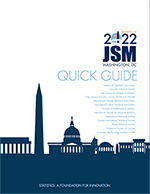Back
2022 Joint Statistical Meetings
Section on Statistics in Epidemiology
Session: SPAAC Poster Competition
Sample Size Calculator for Selection Trials Using Equivalence Designs in Phase II Studies
Monday, August 8, 2022
Activity Number: 197
-
Himanshu Joshi
IHDS, Tisch Cancer Institute, Icahn School of Medicine at Mount Sinai
Phase II studies often remain poorly controlled for type I error due to a variety of factors. As opposed to the “pick-the-winner” design, clinical equivalence designs have been proposed as a suitable alternative, given their ability to enable consideration of non-efficacy factors, in scenarios of equivalence, as determined by a justified margin of clinical equivalence (MOCE). The equivalence design identifies a pre-specified difference of response rates, referred to as MOCE, which can be used as a criterion to conclude lack of clinical equivalence in observed response rates among treatments when the difference in response rates exceeds MOCE. In cases of non-meaningful difference, multiple factors associated with treatments can be evaluated to select the desirable treatment alternative. Use of equivalence can better address the limitations related to the availability of eligible patients frequently encountered in scenarios of less common molecular subtypes or rare cancers and the need for resource-efficiency in drug development. Here we describe an R Shiny App for sample size calculation that implements previously described approach of equivalence design using MOCE along with interim futility criteria for efficacy using Simon’s two stage design.

